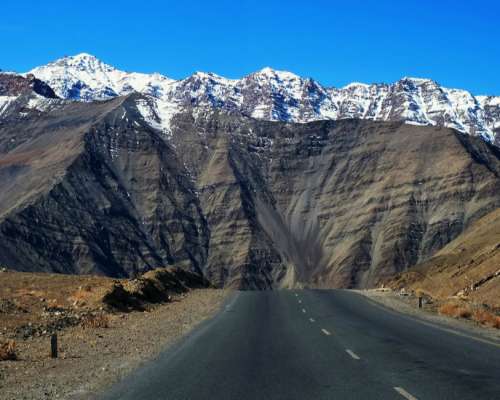When you fly into Leh airport, you are not surrounded by clouds. Instead, you are enveloped by the mountains. Snow-capped peaks tower towards you. As you glide above the clouds, surrounded by the mountains, you feel as if you have been transported to another world: Leh, a place like no other, is surrounded by the mighty Karakoram range and the great Himalayas. The old brick houses, Buddhist gompas and souvenir shops give the town a very special charm. As the joint capital and largest city of Ladakh, it is the first port of call for all travellers, trekkers and cyclists drawn to the vast, unexplored mountain wilderness of Ladakh
More than any other city, Leh has become synonymous with Ladakh. But when you come to Leh, you do not just come to the mountains. Here you will encounter Ladakh’s rich culture, history and tradition… And above all its people
Places to see in Leh
Leh Bazaar: The heart of Leh is the Leh Bazaar. It is the soul of this sleepy town. Here you can sample authentic Ladakhi and buy handicrafts. But most of all, here you have the opportunity to meet the simple, cheerful people of Ladakh’s largest city
Jama Masjid: At Leh Bazaar, you can not miss the city’s main mosque, which towers over the rest of the market. The mosque was built over three hundred years ago as part of an agreement between the ruler of Ladakh, Deldan Namgyal, and the Mughal ruler Aurangzeb. While the Mughal Empire protected the kingdom, Deldan Namgyal paid a fee to Emperor Aurangzeb and built the most famous mosque in Ladakh.
Leh Palace: This seventeenth-century palace, built by King Sengge Namgyal, overlooks the Himalayan mountain ranges of Stok Kangri and Zanskar and overlooks the entire city of Leh. This is truly a unique view of Leh. Although the palace was destroyed during the Kashmiri invasion, it remains a tourist attraction with its architecture, ancient paintings and many other royal artefacts. It is currently managed by the Archaeological Survey of India, which has converted it into a museum and is currently working on restoring the structure. Just above the Leh Palace, you can also visit the Victory Tower, built to commemorate the kingdom’s victory over the Baltic Kashmiri forces in the sixteenth century.
Namgyal Tsemo Gompa: Namgyal Tsemo Gompa is one of the most revered monasteries in Leh and was built by King Tashi Namgyal of Ladakh. Apart from its ancient manuscripts and frescoes, the monastery is also recognisable by its three-storey golden statue of Maitreya Buddha
Shanti Stupa: This magnificent white dome-like structure rises on top of Chamspa Hill. Travellers visit it not only for its architecture and religious significance but also for its spectacular views. The modern structure was built by a Japanese Buddhist Bhikshu Gyomo Nakamura when Buddhism ended its 2500th anniversary in 1991 and continues to be run by Ladakhi monks. It is considered a symbol of peace and is also part of the Peace Pagoda Mission, which seeks to spread peace through the teachings of the Buddha. On full moon nights, the stupa seems to rise one step higher.
Zorawar Fort: A historical structure that has almost disappeared from tourist sight, Zorawar Fort was built by Wazir Zorawar Singh during the reign of Maharaja Gulab Singh of the Dogra dynasty. It served both to protect Ladakh from Chinese invasions and to protect the wealth of the Dogra kings.
SEMCOL: Established in 1988 to reform Ladakh’s education system, SEMCOL is a newer approach to this ancient mountain kingdom. Its eco-friendly campus is known for introducing new “green” ways of living and also organises tours of the campus for travellers who want to experience an alternative way of life. The founder of SEMCOL is Sonam Wangchuk, whose work was first featured in the film 3 Idiots.
War Memorial: When visiting Leh, you can also stop at the War Memorial, off the Leh-Srinagar Highway, to visit the War Memorial and Museum, which commemorates India’s history in the 1999 Kargil War. The museum also documents India’s ongoing history of conflict with Pakistan in this region.
Things to do in Leh
Sindhu Ghat, Shanti Stupa, Bhiksu Gyomo Nakamura, Leh Palace, Matho Monastery, Stok Palace Museum, Khardung La, Leh Royal Palace, Ju-Leh Adventure, Prayer Wheels, Tour of the monasteries, Stok Kangri, Hemis Gompa, Leh,

